Driven Qubit by Train of Gaussian-Pulses
Abstract
1. Introduction
2. Model Equations and Pulse Shape
2.1. Bloch Equations
2.2. Pulse Shape
3. Atomic Behavior and Intensity Correlation
3.1. Mean Polarization and Inversion
3.2. Intensity Correlation
4. Fluorescent Spectrum
5. Computational Results for the Spectrum
5.1. Initial Ground State
5.2. Initial Coherent State
6. Conclusions
- (i)
- The absorptive component of the atomic polarization and the atomic inversion for the initial ground and coherent atomic states reach constant values in an oscillatory form: the number of oscillations and its time speed increase with larger number of pulses and for relatively larger repetition time of pulses. The constant values of the atomic absorptive polarization and inversion are due to the nature of the infinite extent of the Gaussian pulses.
- (ii)
- The anti-bunching effect in the emitted radiation is shown for both weak and strong pulse strength. For larger number of pulses ) and strong strength of the field, the photon statistics of the emitted radiation becomes coherent (i.e., ) at certain times before the reach to its constant sub-Poissonian value, , for repetition time .
- (iii)
- The transient fluorescent spectrum in the one pulse case and for weak pulse excitation with initial ground state shows a symmetric single Lorentzian with dip-structure at earlier time of observation, which vanishes with increasing time. For strong pulse excitation with initial ground state, earlier observation of the spectrum exhibits a single Lorentzian with both dip structure and side bands which vanish with larger time. For larger number of pulses, , the spectrum is of Mollow triplet Lorentzian type, where the side bands get nearer (farther) to the central peak with . The initial atomic coherent state in the case of pulse introduces asymmetry in the strong field case due to the Rabi oscillations and interference occurred with initial coherent dispersion processes. For many pulses, , and, for repetition time, , the asymmetrical side bands in the spectrum are farther (nearer) apart.The case of chirped Gaussian pulses will be treated in a future work, as the model Bloch equations have no exact analytical solutions, and this requires approximate analytical treatment.
Funding
Institutional Review Board Statement
Informed Consent Statement
Data Availability Statement
Acknowledgments
Conflicts of Interest
References
- Golubev, N.V.; Kuleff, A.I. Control of populations of two-level systems by a single resonant laser pulse. Phys. Rev. A 2014, 90, 035401–035406. [Google Scholar] [CrossRef]
- Kodriano, Y.; Schwartz, I.; Poem, E.; Benny, Y.; Presman, R.; Truong, T.A.; Petroff, P.M.; Gershoni, D. Complete control of a matter qubit using a single picosecond laser pulse. Phys. Rev. B. 2012, 85, 241304–241306. [Google Scholar] [CrossRef]
- Felinto, D.; Bosco, C.A.; Acioli, L.H.; Vianna, S.S. Coherent accumulation in two-level atoms excited by a train of ultrashort pulses. Opt. Commun. 2003, 215, 69–73. [Google Scholar] [CrossRef]
- Mollow, B.R. Power spectrum of light scattered by two-level systems. Phys. Rev. 1969, 188, 1969–1976. [Google Scholar] [CrossRef]
- Schuda, F.; Stroud, C.R., Jr.; Hercher, M. Observation of the resonant Stark effect at optical frequencies. J. Phys. B Atom. Mol. Phys. 1974, 7, L198–L202. [Google Scholar] [CrossRef]
- Wu, F.Y.; Grove, R.E.; Ezekiel, S. Investigation of the spectrum of resonance fluorescence induced by a monochromatic field. Phys. Rev. Lett. 1975, 35, 1426–1429. [Google Scholar] [CrossRef]
- Hartig, W.; Rasmussen, W.; Schieder, R.; Walther, H. Study of the frequency distribution of the fluorescent light induced by monochromatic radiation. Zeitschrift Für Physik A Atoms Nuclei 1976, 278, 205–210. [Google Scholar] [CrossRef]
- Lewenstein, M.; Zakrzewski, J.; Rza̧zewski, k. Theory of fluorescence spectra induced by short laser pulses. J. Opt. Soc. Am. B 1986, 3, 22–35. [Google Scholar] [CrossRef]
- Rodgers, P.A.; Swain, S. Multi-peaked resonance fluorescence spectra with rectangular laser pulses. Opt. Commun. 1991, 81, 291–296. [Google Scholar] [CrossRef]
- Hassan, S.S.; Joshi, A.; Al-Madhari, N.M. Spectrum of a pulsed driven qubit. J. Phys. B Atom. Mol. Opt. Phys. 2009, 41, 089801. [Google Scholar] [CrossRef]
- Alharbey, R.A. Transient spectrum of sin2-pulsed driven qubit. Int. J. Pure Appl. Math. 2015, 100, 193–209. [Google Scholar] [CrossRef][Green Version]
- Deutsch, D. Quantum theory, the Church—Turing principle and the universal quantum computer. Proc. R. Soc. Lond. A Math. Phys. Sci. 1985, 400, 97–117. [Google Scholar]
- Kok, P.; Lovett, B.W. Introduction to Optical Quantum Information Processing; Cambridge University Press: Cambridge, UK, 2010. [Google Scholar]
- Mabuchi, H. Coherent-feedback control strategy to suppress spontaneous switching in ultralow power optical bistability. Appl. Phys. Lett. 2011, 98, 193109-3. [Google Scholar] [CrossRef]
- Carmichael, H.J.; Walls, D.F. A quantum-mechanical master equation treatment of the dynamical Stark effect. J. Phys. B Atom. Mol. Phys. 1976, 9, 1199–1219. [Google Scholar] [CrossRef]
- Kimble, H.J.; Mandel, L. Resonance fluorescence with excitation of finite bandwidth. Phys. Rev. A 1977, 15, 689–699. [Google Scholar] [CrossRef]
- Cohen-Tannoudji, C.; Reynaud, S. Atoms in strong light-fields: Photon antibunching in single atom fluorescence. Philos. Trans. R. Soc. Lond. Ser. A Math. Phys. Sci. 1979, 293, 223–237. [Google Scholar]
- Mandel, L. Sub-Poissonian photon statistics in resonance fluorescence. Opt. Lett. 1979, 1979 4, 205–207. [Google Scholar] [CrossRef]
- Kimble, H.J.; Dagenais, M.; Mandel, L. Photon antibunching in resonance fluorescence. Phys. Rev. Lett. 1977, 39, 691–695. [Google Scholar] [CrossRef]
- Kimble, H.J.; Mandel, L. Theory of resonance fluorescence. Phys. Rev. A 1976, 13, 2123–2144. [Google Scholar] [CrossRef]
- Short, R.; Mandel, L. Observation of sub-Poissonian photon statistics. Phys. Rev. Lett. 1983, 51, 384–387. [Google Scholar] [CrossRef]
- Gisin, N.; Ribordy, G.; Tittel, W.; Zbinden, H. Quantum cryptography. Rev. Mod. Phys. 2002, 74, 145. [Google Scholar] [CrossRef]
- Scarani, V.; Bechmann-Pasquinucci, H.; Cerf, N.J.; Dus̆ek, M.; Lütkenhaus, N.; Peev, M. The security of practical quantum key distribution. Rev. Mod. Phys. 2009, 81, 1301–1352. [Google Scholar] [CrossRef]
- Chunnilall, C.J.; Degiovanni, I.P.; Kück, S.; Müller, I.; Sinclair, A.G. Metrology of single-photon sources and detectors. Opt. Eng. 2014, 53, 081910. [Google Scholar] [CrossRef]
- Hassan, S.S.; Alharbey, R.A.; Jarad, T.; Almaatooq, S. Driven harmonic oscillator by train of chirped Gaussian pulses. Int. J. Appl. Math. 2020, 33, 59–73. [Google Scholar] [CrossRef]
- Lebedev, N.N. Special Functions and their Applications; Dover Publications Inc.: New York, NY, USA, 1972. [Google Scholar]
- Radcliffe, J.M. Some properties of coherent spin states. J. Phys. A Gen. Phys. 1971, 4, 313–323. [Google Scholar] [CrossRef]
- Arecchi, F.T.; Courtens, E.; Gilmore, R.; Thomas, H. Atomic coherent states in quantum optics. Phys. Rev. A 1972, 6, 2211–2237. [Google Scholar] [CrossRef]
- Eberly, J.H.; Wodkiewicz, K. The time-dependent physical spectrum of light. J. Opt. Soc. Am. 1977, 67, 1252–1261. [Google Scholar] [CrossRef]
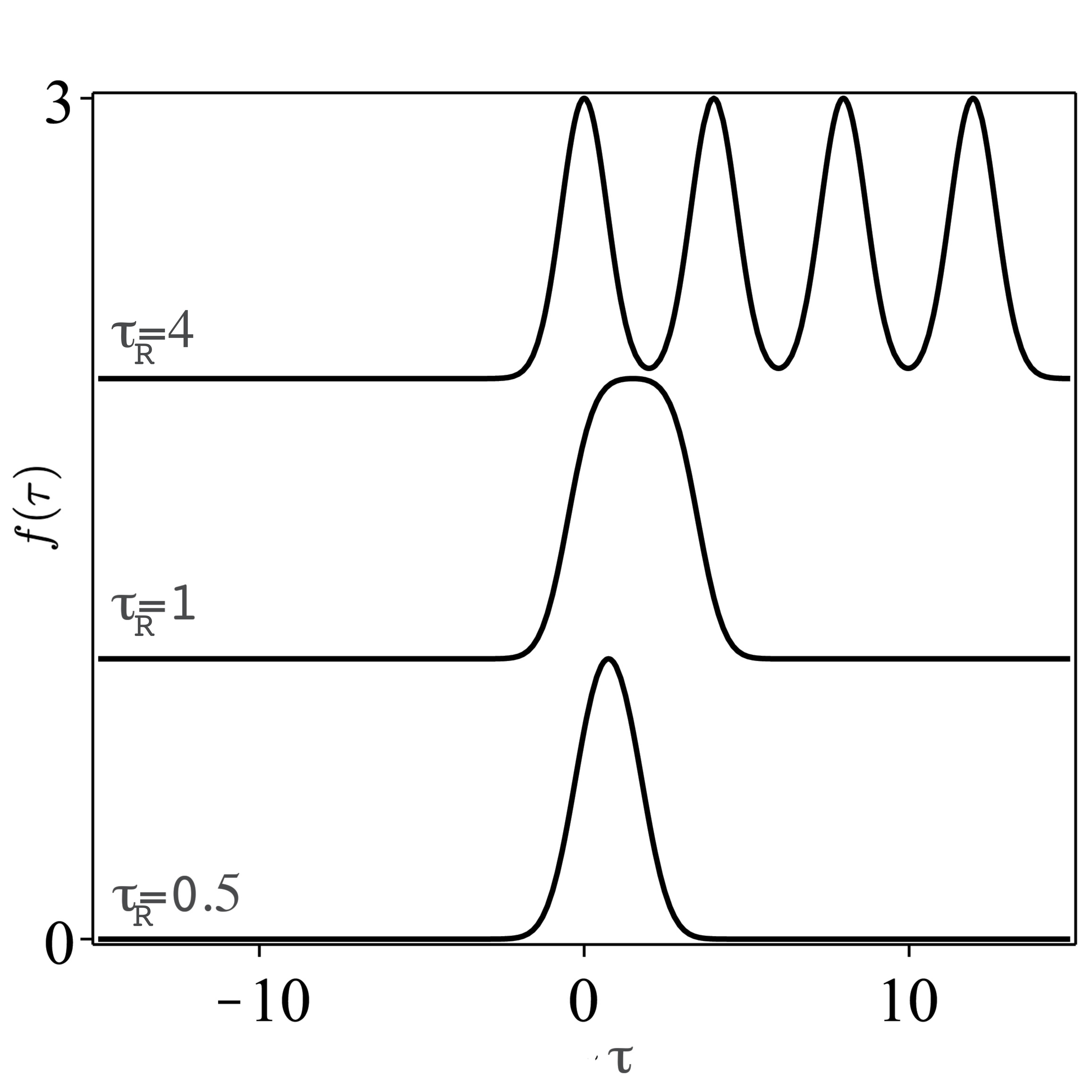
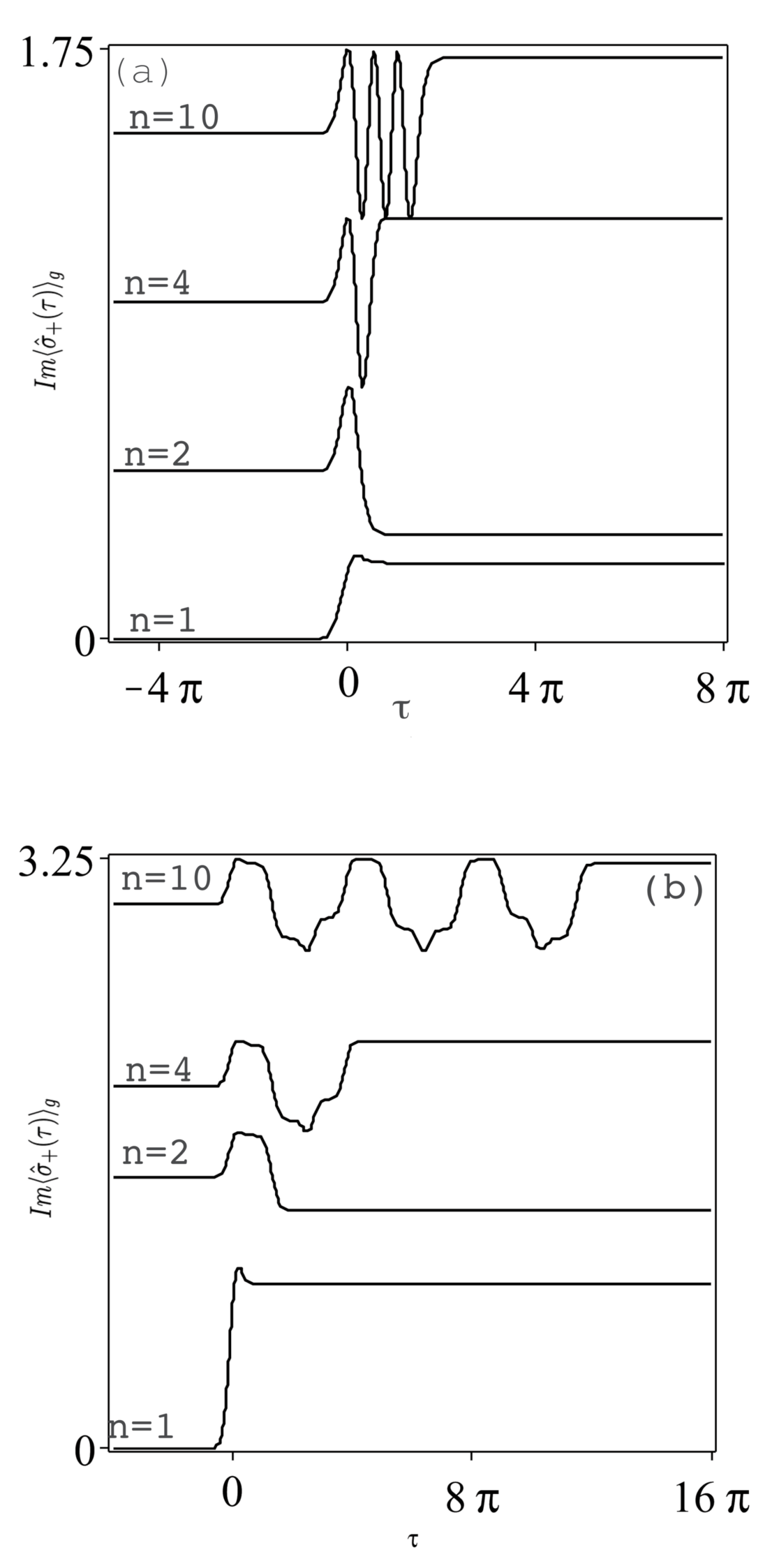
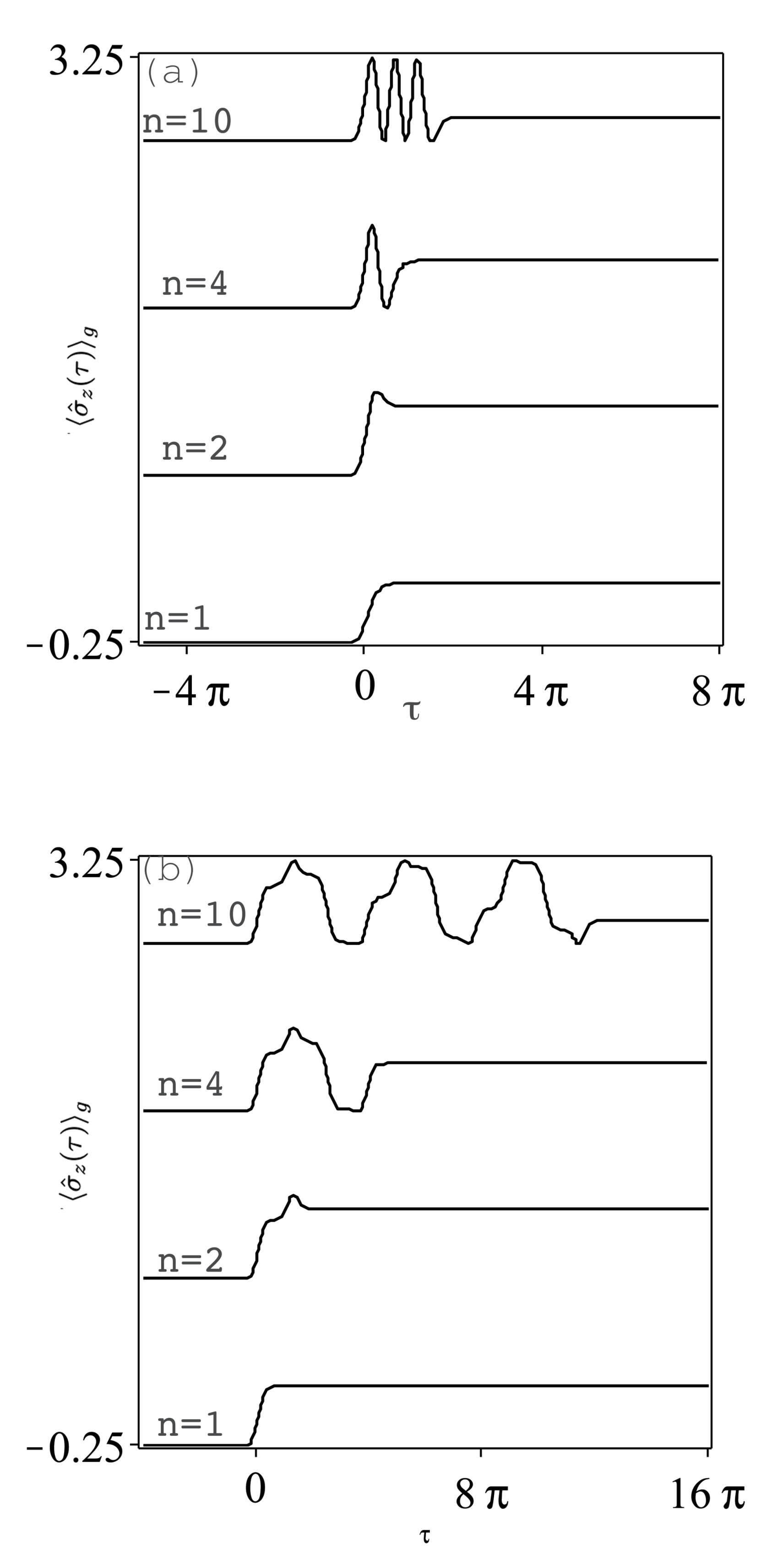
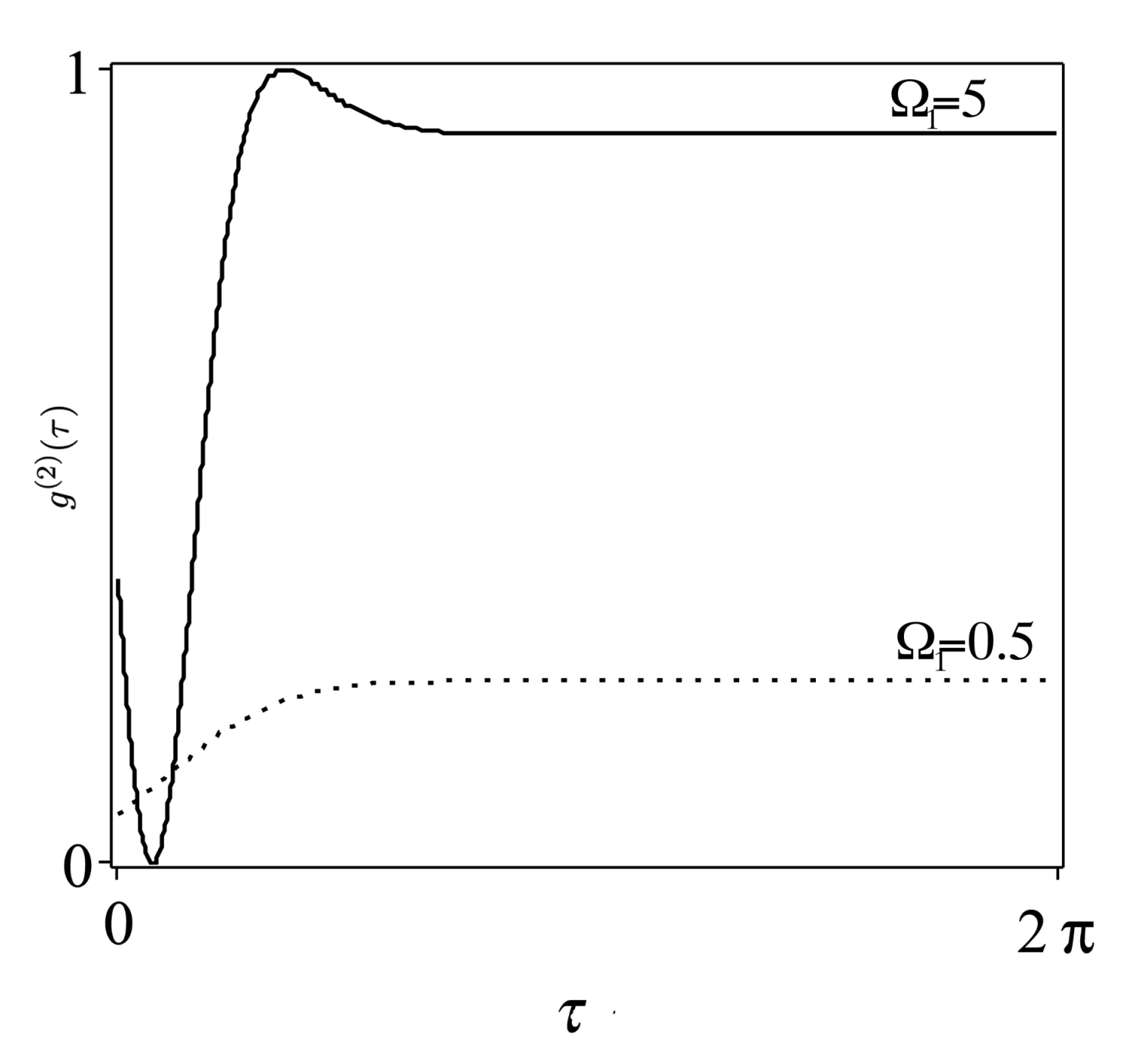

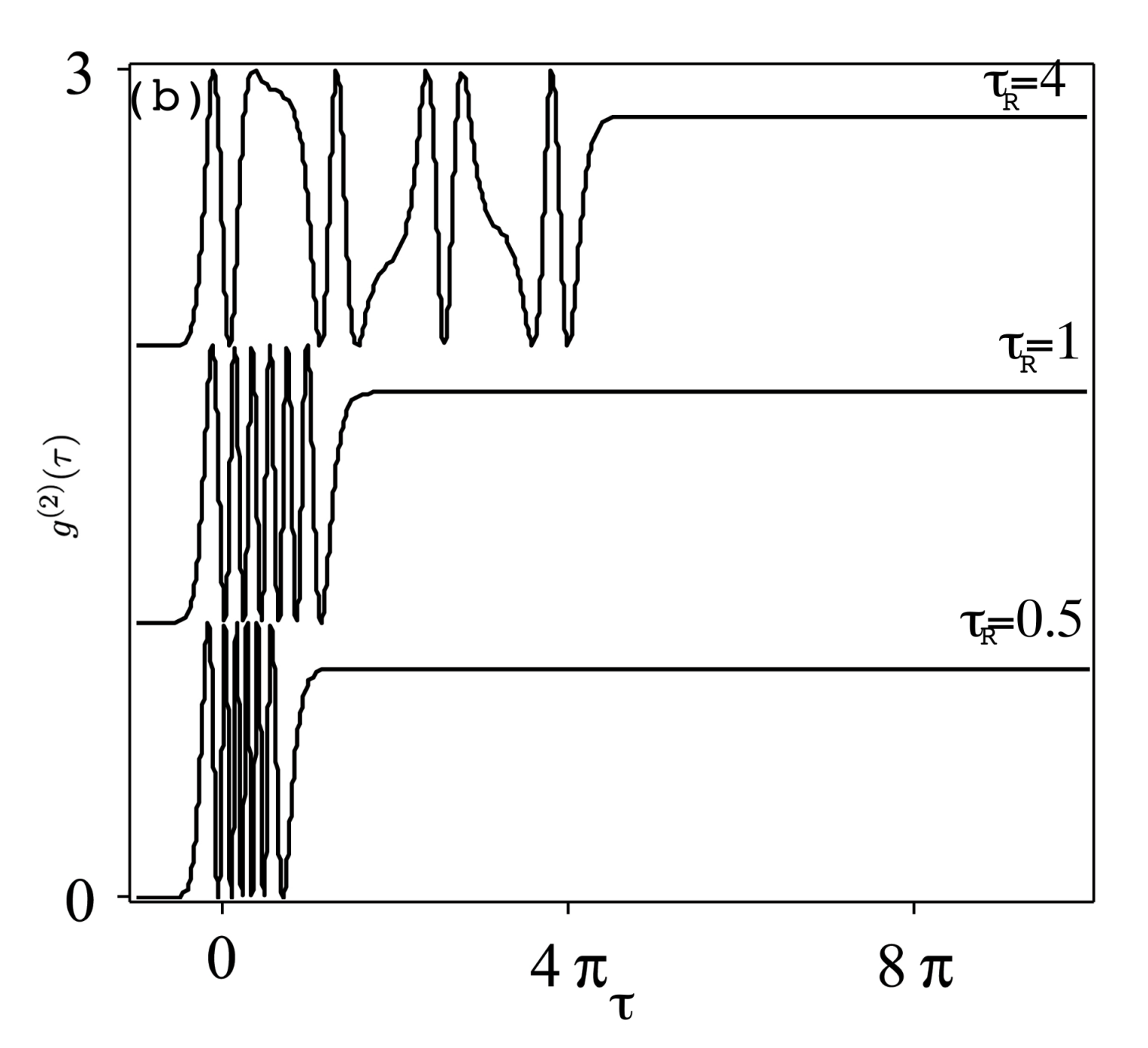
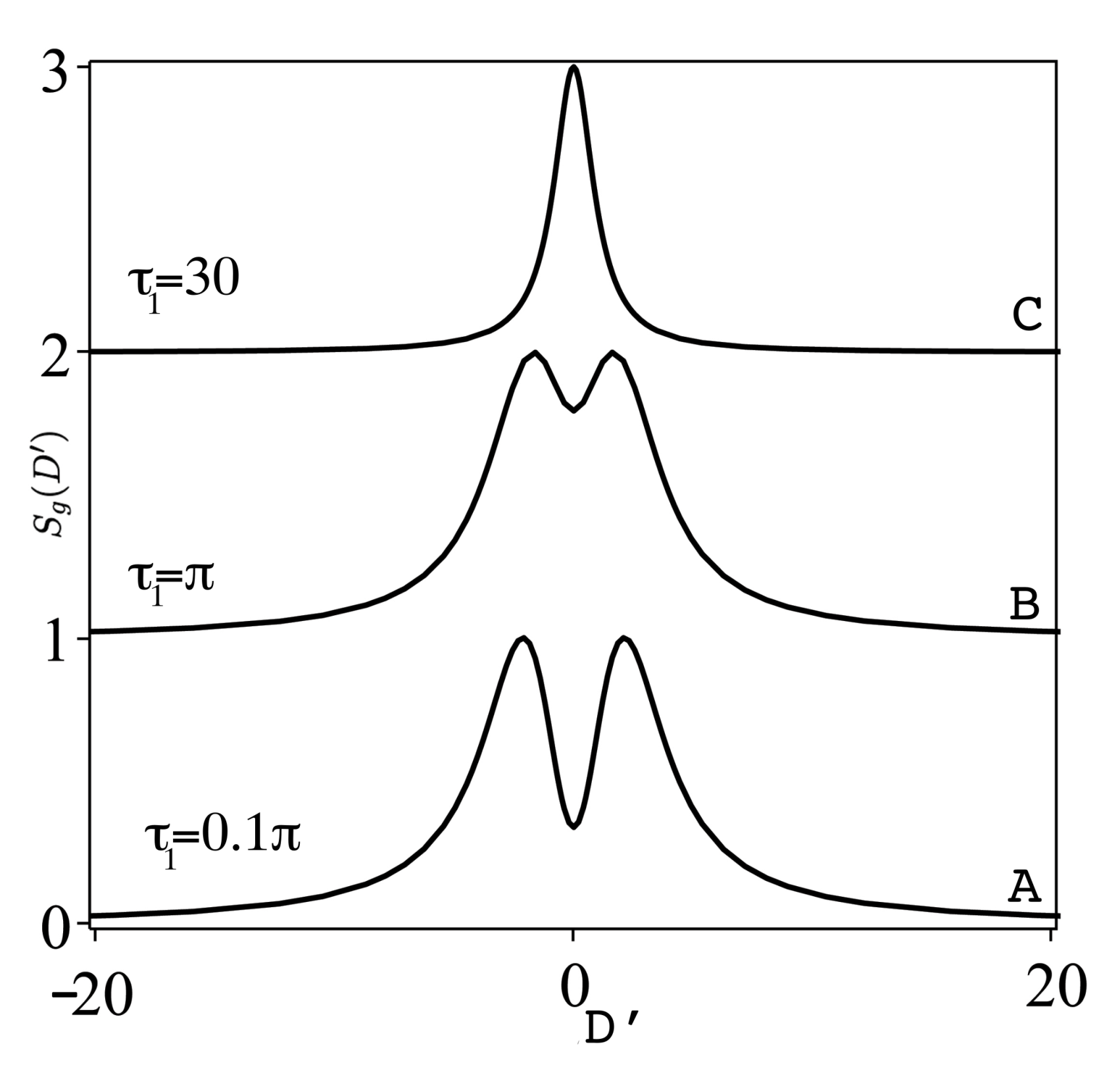
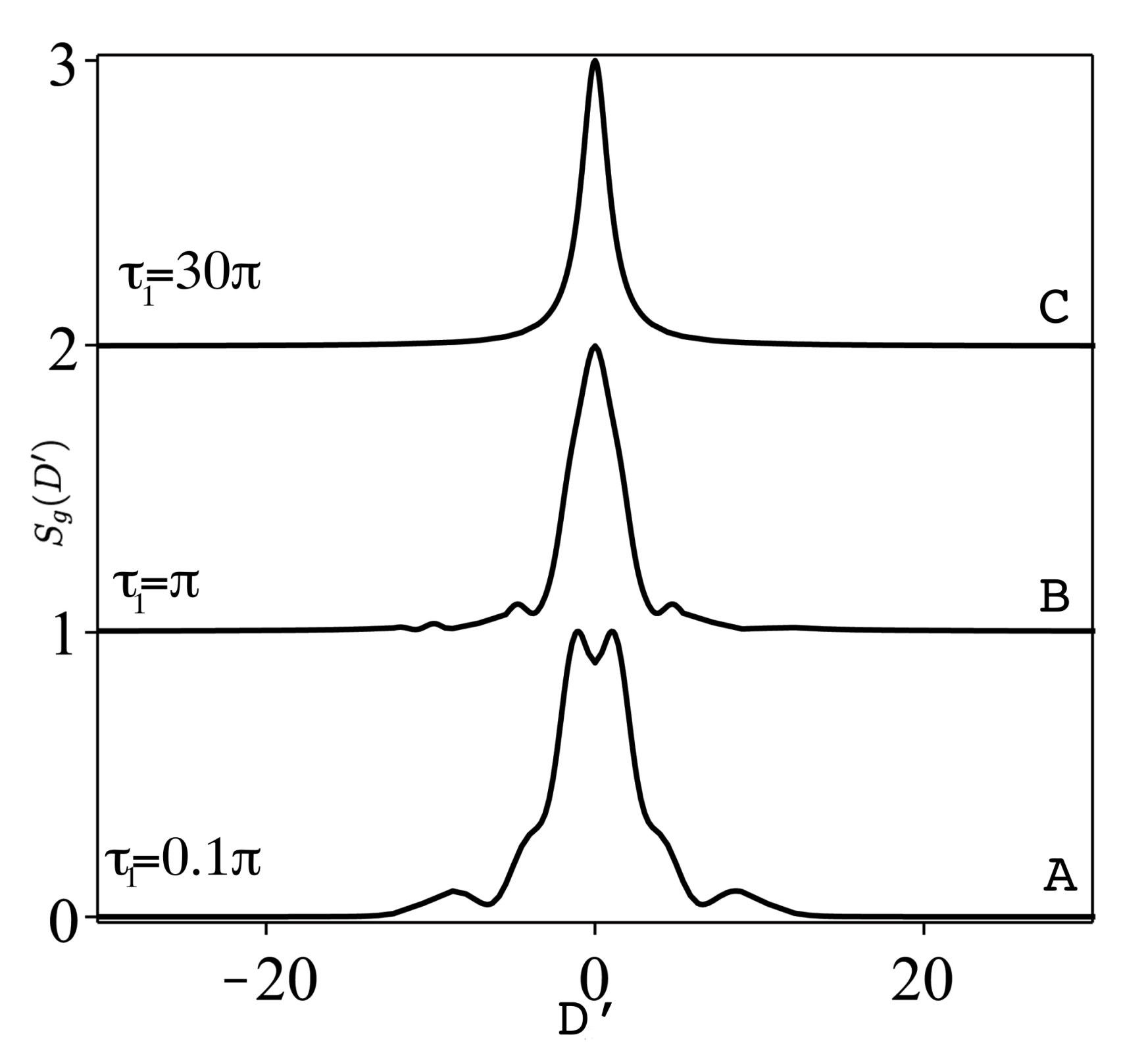

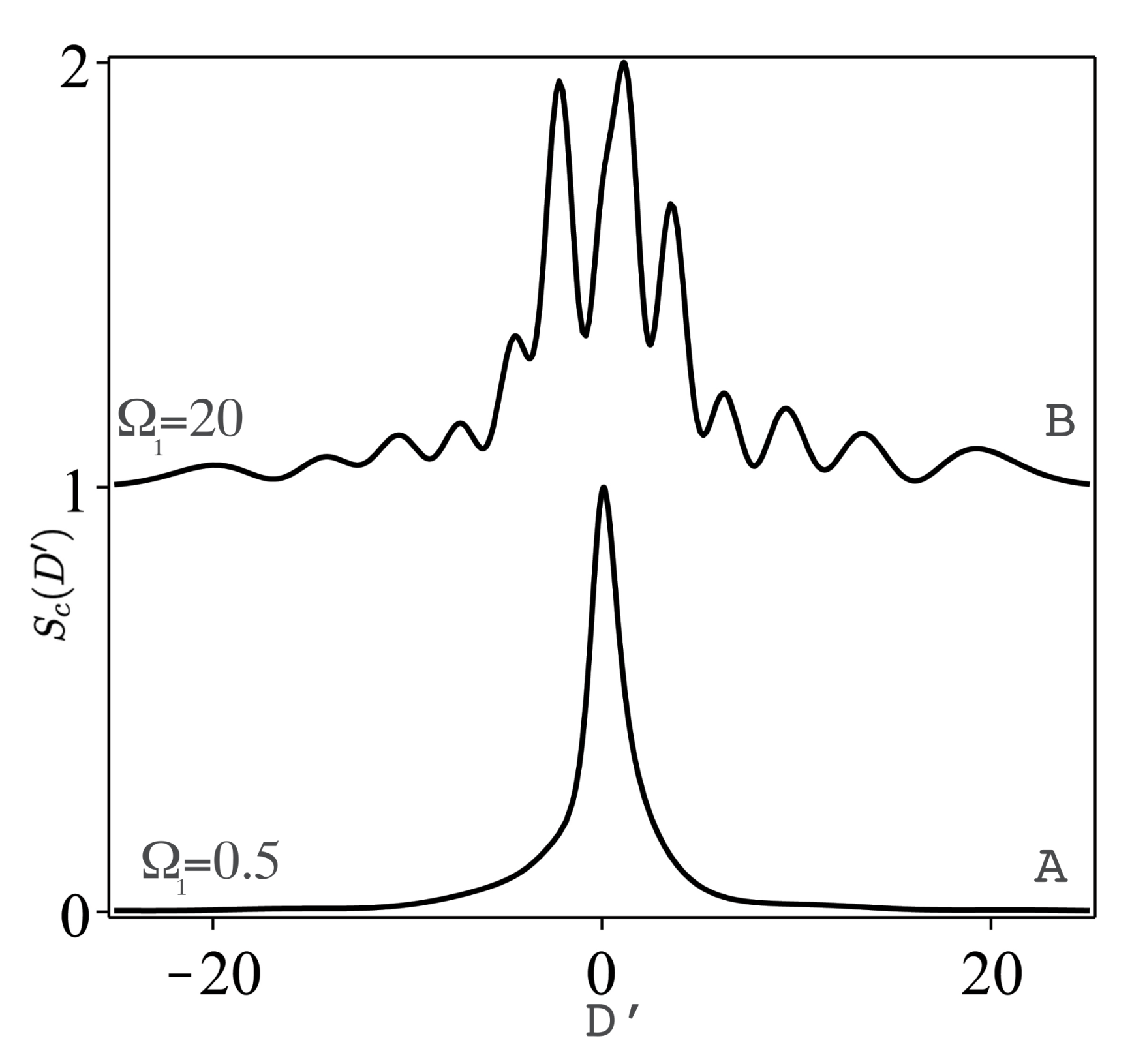
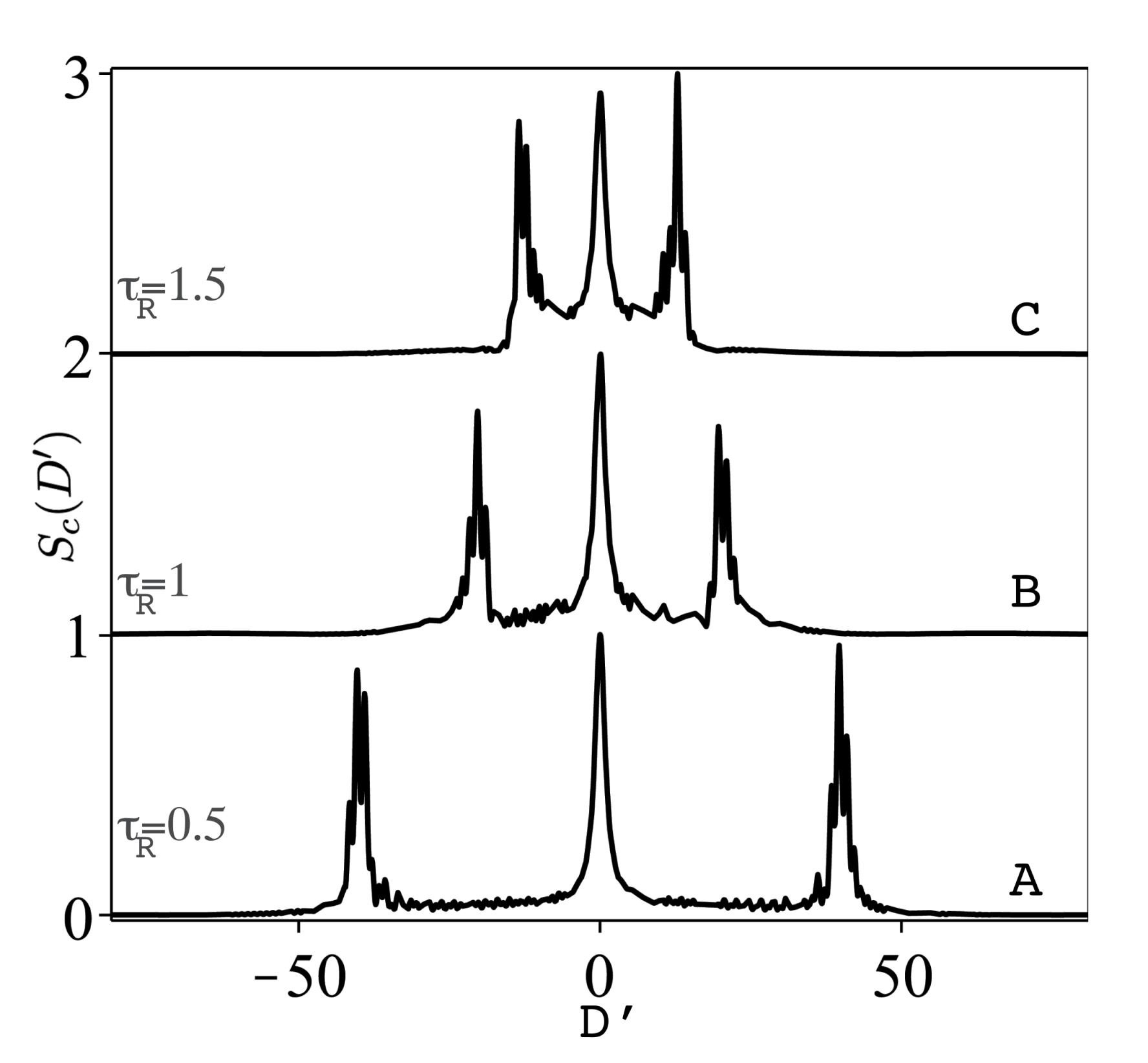
Publisher’s Note: MDPI stays neutral with regard to jurisdictional claims in published maps and institutional affiliations. |
© 2021 by the author. Licensee MDPI, Basel, Switzerland. This article is an open access article distributed under the terms and conditions of the Creative Commons Attribution (CC BY) license (http://creativecommons.org/licenses/by/4.0/).
Share and Cite
Alharbey, R.A. Driven Qubit by Train of Gaussian-Pulses. Mathematics 2021, 9, 628. https://doi.org/10.3390/math9060628
Alharbey RA. Driven Qubit by Train of Gaussian-Pulses. Mathematics. 2021; 9(6):628. https://doi.org/10.3390/math9060628
Chicago/Turabian StyleAlharbey, Rania A. 2021. "Driven Qubit by Train of Gaussian-Pulses" Mathematics 9, no. 6: 628. https://doi.org/10.3390/math9060628
APA StyleAlharbey, R. A. (2021). Driven Qubit by Train of Gaussian-Pulses. Mathematics, 9(6), 628. https://doi.org/10.3390/math9060628




